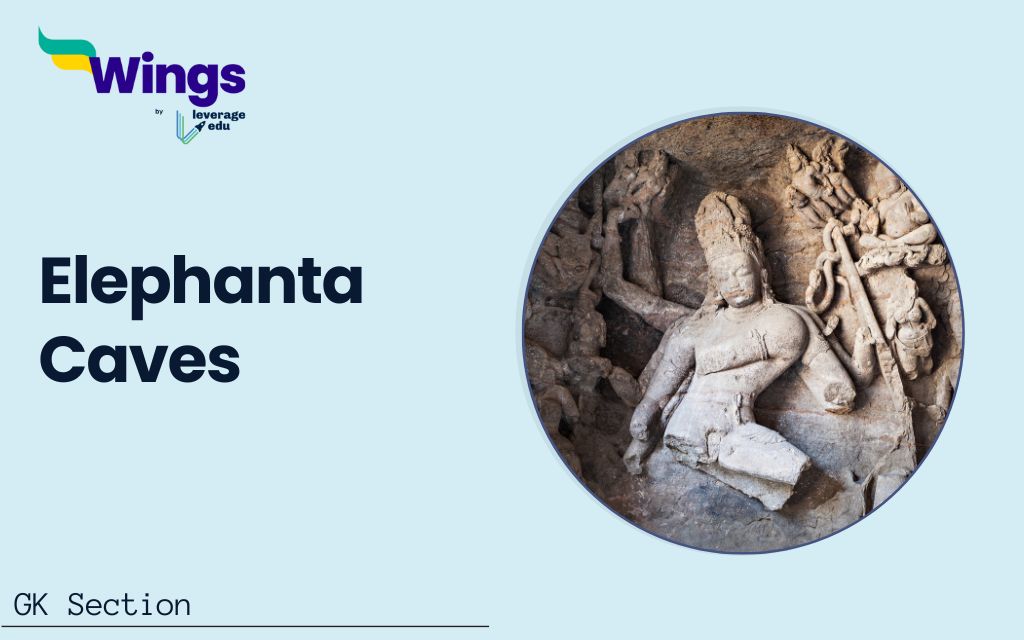Elephanta Caves are rock-cut caves situated on Elephanta Island in Western India. It was built in the middle of the 5th and 6th centuries. Elephanta Caves was listed as a UNESCO World Heritage Site in 1987. Elephanta Caves now have important cultural and historical value, making them a vital component of the art and culture sector. This blog will look into the history, art, architecture, and cultural significance of Elephanta Caves.
Contents
What are Elephanta Caves?
The Elephanta Caves are a UNESCO World Heritage Site on Elephanta Island that includes a series of rock-cut temples. The site is also known as Gharapuri, which means ‘city of caves’. These caves are a piece of evidence of India’s rich cultural heritage and architecture, displaying the craftsmanship of ancient India.

Elephanta Caves:Historical Background
The Elephanta Caves are believed to date from the mid-5th to 6th centuries AD. However, the exact origins of the caves are unknown. This cave features a rock-cut architectural style.
- The island is known as Elephanta to the Portuguese because of a massive stone elephant sculpture found near the landing site.
- That sculpture has recently been relocated to the Victoria and Albert Museum in Mumbai.
- The caves are mostly dedicated to Hindu deities, showing the influence of Shaivism at the time.
- Some academics believe that these caves were built during the period of the Chaulakya Dynasty.
- Some researchers identify these caves with the Rashtrakuta dynasty because of their contributions to rock-cut construction.
Also Read: 20 Fun Facts About Mumbai: The City of Dreams
Elephanta Caves:Architectural Significance
Architectural planning and layout play an important role in the development of caves and structures.
- The Elephanta caves are divided into two groups: the main group contains five Hindu caves, while the smaller group contains two Buddhist caves.
- The first cave, known as the Great Cave or the Maheshamurti Cave, is the most important.

Elephanta Caves: The Great Cave
The Great Cave is the largest of the Elephanta Caves. It includes a main hall, two lateral chambers, courtyards, and shrines. The cave has rock-cut architecture and displays various forms of Lord Shiva.
- Trimurti: The Trimurti is the most iconic sculpture of the Great Cave. It is a six-meter-high, three-headed sculpture of Lord Shiva. This sculpture symbolises Shiva’s three aspects: creation, protection, and destruction. The Trimurti is considered a masterpiece of Indian rock-cut sculpture.
- Ardhanarishvara: This sculpture shows Shiva as Ardhanarishvara, combining his masculine (Shiva) and feminine (Parvati) aspects. It represents the male and female elements of the universe.
- Gangadhara: This depicts Shiva as Gangadhara, representing the mythological event in which the river Ganga descends from heaven.
- Andhakasura Vadha: The Andhakasura Vadha sculpture depicts Shiva defeating the demon Andhaka, highlighting him as the remover of evil.
- Ravananugraha: This panel depicts Ravan attempting to lift Mount Kailasha.
Apart from Cave 1, there are various caves that add to the cultural and historical value. These caves got damaged and deteriorated over time, providing insights into the architectural and artistic practices of the time. The two Buddhist Caves are simple, consisting mostly of stupas.
Also Read: United Nations Education Scientific & Cultural Organization
Elephanta Caves: Preservation
The Elephanta Cvaes have faced multiple challenges throughout the years, including natural weather, vandalism, and neglect.
- The caves were severely damaged during the Portuguese time, as soldiers supposedly used the sculptures for target practice.
- However, attempts to safeguard these sites have been ongoing since the 20th century.
- The Archaeological Survey of India (ASI) has taken several steps to maintain and conserve the sculptures.
- The Elephanta Caves were recognised as a UNESCO World Heritage Site in 1987 due to their worldwide value.
Related Posts
FAQs
The Elephanta Caves are a UNESCO World Heritage Site on Elephanta Island that includes a series of rock-cut temples. The site is also known as Gharapuri, which means ‘city of caves’. These caves are a piece of evidence of India’s rich cultural heritage and architecture, displaying the craftsmanship of ancient India.
The island on which Elephanta caves are located is known as Elephanta to the Portuguese because of a massive stone elephant sculpture found near the landing site. That sculpture has recently been relocated to the Victoria and Albert Museum in Mumbai.
Elephanta Caves may be accessible by ferry from Mumbai’s Gateway of India. After an hour’s journey, visitors can explore the caves and enjoy stunning views of Mumbai Harbour and the Arabian Sea. A visit to the Elephant Caves is an interesting experience that helps one to appreciate the rich heritage of ancient India. It is a key site for historians and art enthusiasts.
This was all about the “Elephanta Caves”. For more such informative blogs, check out our UPSCExams Section and Study Material Section, or you can learn more about us by visiting our Indian exams page.
 One app for all your study abroad needs
One app for all your study abroad needs














